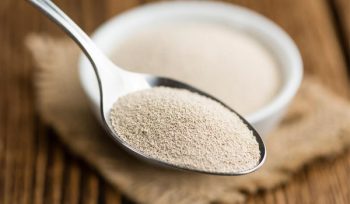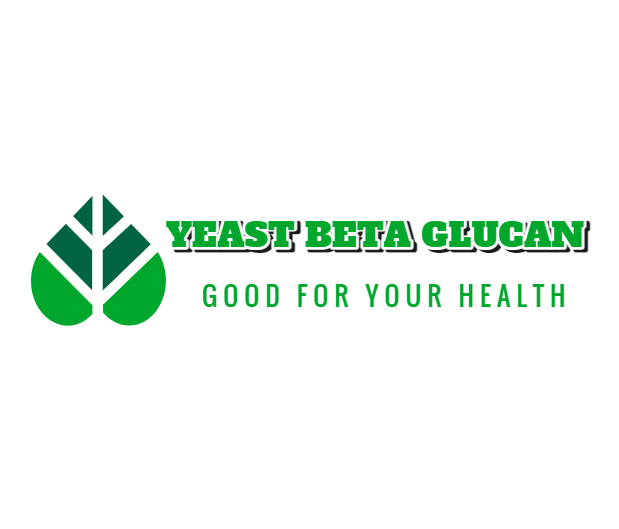Tầm quan trọng của chất xơ như một phần của chế độ ăn uống cân bằng đối với sức khỏe con người đã được công nhận rộng rãi. β-glucans là một loại chất xơ hòa tan có tác dụng lên đường huyết, nồng độ insulin trong máu, cholesterol và khả năng miễn dịch đã được đề xuất.
Nấm men beta glucan là gì?
Glucans beta có nguồn gốc từ nấm men Thường bắt nguồn từ men Baker, men hoặc men bia. Mặc dù cả hai đều là glucan beta 1,3/1,6 từ Saccharomyces cerevisiae, nguồn gốc, các vấn đề về glucans beta được chiết xuất từ thành tế bào của men Baker, có một mô hình phân tử khác với sản phẩm sản phẩm khác nhau. Nghiên cứu hỗ trợ các đặc tính điều chế miễn dịch của Baker từ men beta Glucan, nhưng không phải tất cả các chủng đều giống nhau.
Đặc điểm hóa lý của men beta glucan

Nấm men beta-glucan là một chuỗi dài các polysacarit. Nó chứa chuỗi chính của β-1,3-glucan và chuỗi phân nhánh của β-1,6-glucan, trọng lượng phân tử là khoảng 500-1000kd.
Lợi ích của men beta glucan
Chức năng chính của men beta-glucan là sự điều chế của hệ thống miễn dịch. Hiệu ứng như vậy là do β-glucans’ Khả năng kích thích các thụ thể của hệ thống miễn dịch bẩm sinh có trong màng tế bào ruột, tế bào M và tế bào đuôi gai, tăng cường các đại thực bào’ Hoạt động thực bào hoạt động kháng khuẩn hoạt động của các tế bào đơn nhân và bạch cầu trung tính.
Nấm men ß-glucans cũng sẽ ngăn chặn sự thúc đẩy và tiến triển của một số loại ung thư, hoạt động hiệp đồng với các kháng thể đơn dòng và hóa trị liệu. Sự kích thích miễn dịch này sẽ đạt được bằng cách tăng sự tiết ra các cytokine và chemokine gây viêm.

An toàn khi sử dụng men beta glucan
Chỉ có một nghiên cứu độc tính cấp tính và phụ-CHRIC của β-glucans từ nấm men (WGP) đã được phát triển ở chuột. Kết quả cho thấy sự vắng mặt của các tác động tiêu cực đối với trọng lượng động vật và tỷ lệ tử vong của Morbi sau khi quản lý trọng lượng cơ thể 2 g/kg của-glucans trong 14 ngày.
An toàn của nó đã được công nhận là thường được công nhận là an toàn (“Gras” sản phẩm) của FDA Hoa Kỳ (Cục Quản lý Thực phẩm và Dược phẩm) vào năm 2007, xem xét rằng Saccharomyces cerevisiae có mặt một cách tự nhiên trong chế độ ăn uống của con người (đặc biệt là cho quá trình làm bánh) từ năm đầu đời.
Các Cơ quan An toàn Thực phẩm Châu Âu (EFSA) đề cập rằng dữ liệu độc tính cấp tính, phụ-ch-chê-ri và mãn tính bị hạn chế ở người. Nhưng đây không phải là một nguyên nhân gây lo ngại vì tiêu thụ Saccharomyces cerevisiae là phổ biến thông qua các sản phẩm bia và bia thủ công và không thể hiện nguy cơ dị ứng lớn. Xem xét nền tảng này và tương tự như FDA, EFSA đã kết luận rằng việc tiêu thụ-glucans từ nấm men là an toàn cho con người.

Việc sử dụng men beta glucan trong ngành công nghiệp thực phẩm và các quy định pháp lý
Men-glucans, yêu cầu an toàn do FDA ban hành và EFSA, cho phép họ thêm vào các loại thực phẩm khác nhau, bao gồm cả đồ uống dành cho dân số nói chung.
Những gì mà liều lượng được khuyến nghị để dùng men beta glucan?
Công ty Biothera đã kết hợp β-glucans từ nấm men (Wellmune®) vào các món nướng, nước ép, ngũ cốc, sữa, phái sinh thực vật và súp với nồng độ khoảng 200 mg mỗi khẩu phần để tiêu thụ; Nó cũng tiếp thị nó như một bổ sung chế độ ăn uống.

 English
English Nederlands
Nederlands Français
Français Deutsch
Deutsch Italiano
Italiano 日本語
日本語 Português
Português Русский
Русский Español
Español Türkçe
Türkçe Tiếng Việt
Tiếng Việt



3 phản hồi
Nó thực sự là một phần thông tin tuyệt vời và hữu ích. Tôi rất vui vì bạn đã chia sẻ thông tin hữu ích này với chúng tôi. Hãy ở lại chúng tôi cập nhật như thế này. Cảm ơn bạn đã chia sẻ.